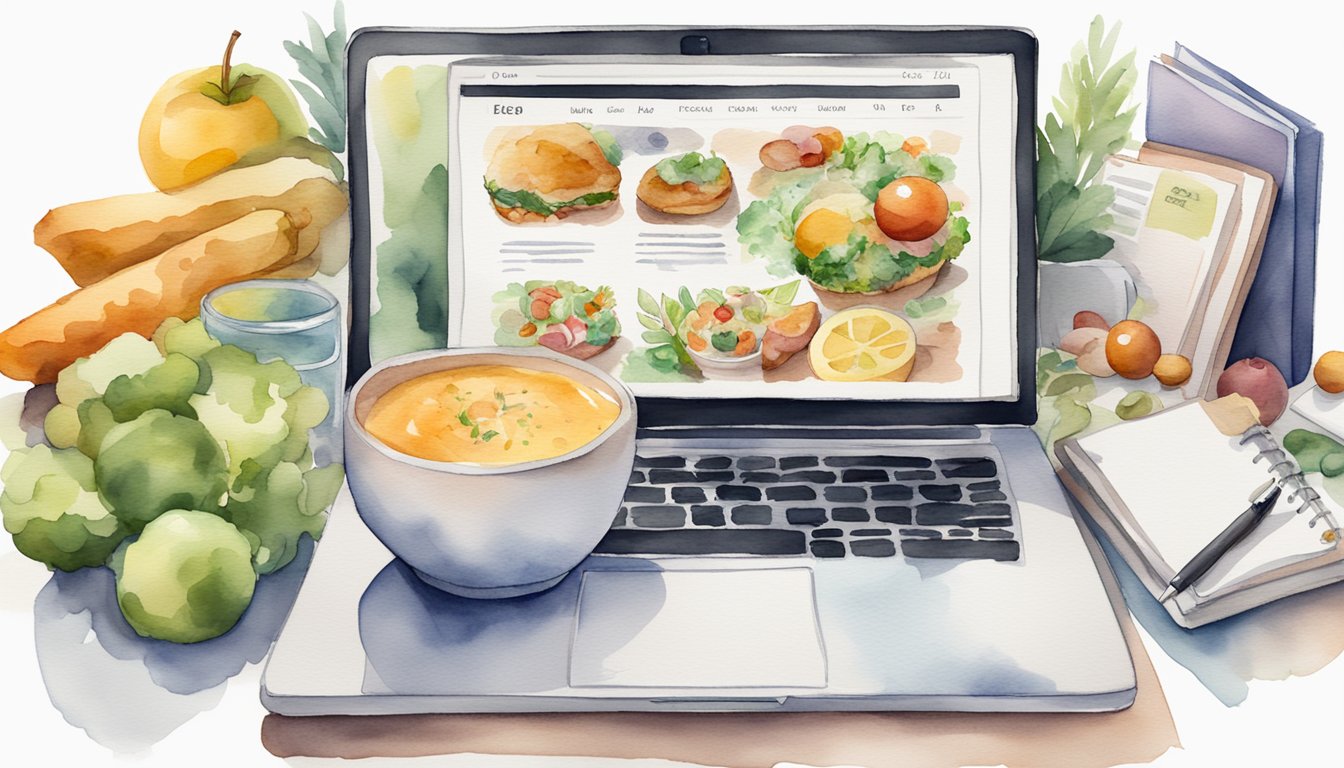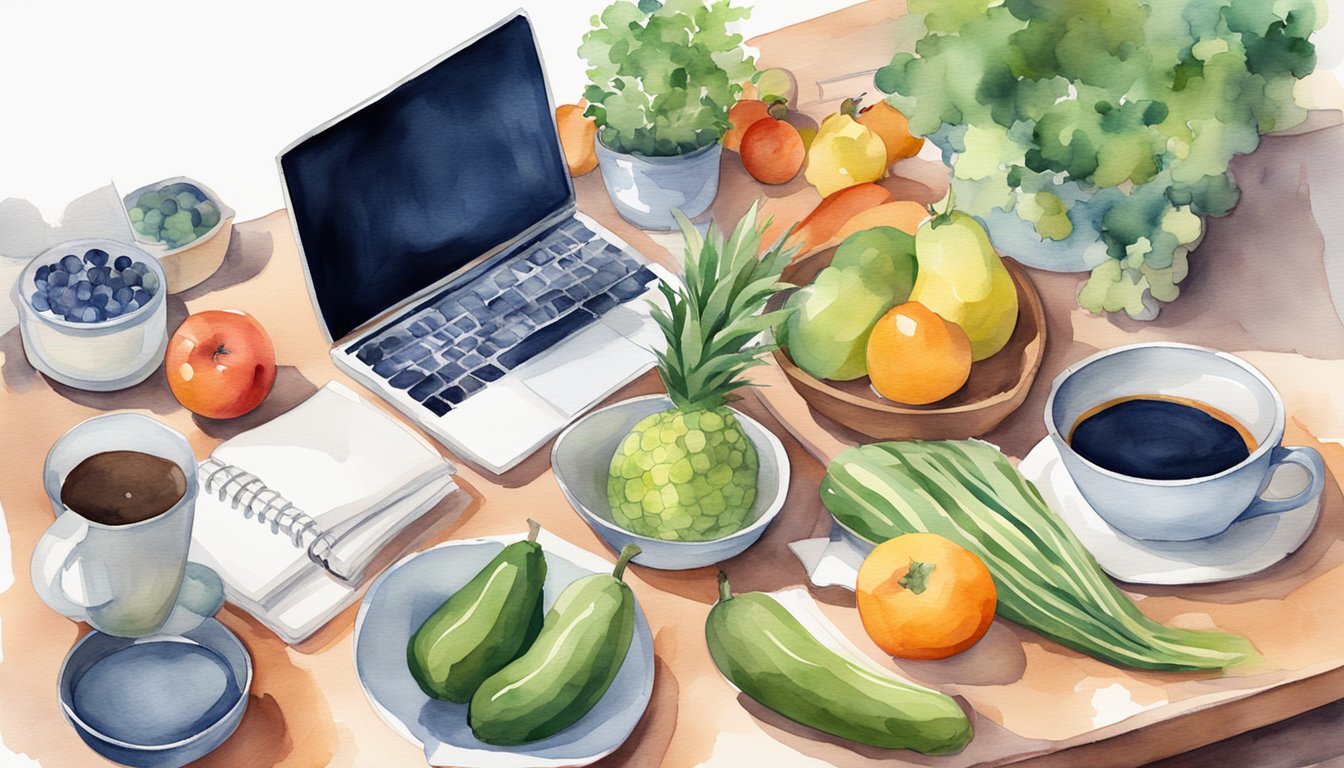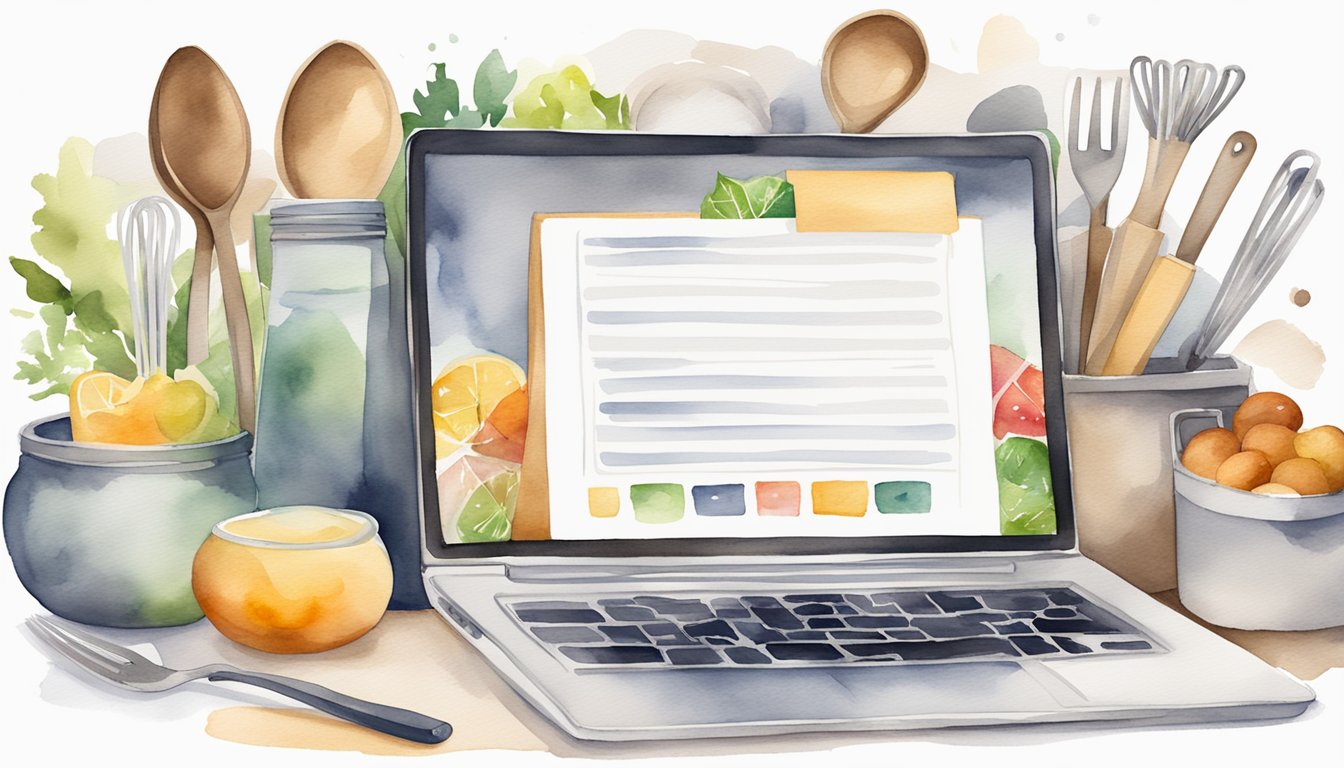Embarking on the journey of starting a food blog can be a thrilling pursuit that blends your passion for gastronomy with your writing and photography skills. Whether you’re sharing family recipes, experimenting with new cuisines, or reviewing restaurants, a food blog allows you to connect with like-minded food lovers around the world. Your blog can serve as a platform to express your culinary creativity, share personal anecdotes, and offer valuable insights into the vast world of food.
Before diving into the world of food blogging, it’s essential to understand the ingredients for success. It begins with pinpointing your unique angle within the crowded blogosphere—finding a niche that reflects your interests and expertise and resonates with an audience craving your content. From there, setting up your blog with a clear and attractive design and creating content that stands out—both in quality and appeal—becomes your recipe for potential growth. As you cultivate your brand and learn to navigate the business aspects, your blog can gradually transform from a hobby into a professional platform.
Key Takeaways
- Starting a food blog combines culinary passion with creativity in writing and photography.
- Success in food blogging hinges on identifying a unique niche and dedicated audience.
- Professional growth involves mastering content creation and understanding the business of blogging.
Choosing a Niche and Identifying Your Audience
https://www.youtube.com/watch?v=ljYVmRhTNgU&embed=true

To achieve success with your food blog, selecting a specific niche and clearly understanding who you’re writing for is crucial. These steps help create content that resonates with the right crowd.
Niche Research
When researching niche options for your food blog, start by listing topics that genuinely interest you. Are you into baking, vegan diets, or maybe regional cuisines? Think about what sets you apart in the massive world of food blogging. You might decide that fusion recipes cater to your skills and interests, which could attract a distinct audience of adventurous foodies.
-
Analyze Competitors: Check out existing food blogs within your areas of interest. Note what they do well and where there could be gaps that your blog can fill.
-
Trends & Demand: Use tools like Google Trends to understand what food-related topics people are searching for.
Understanding Your Target Audience
Knowing your target audience is as essential as choosing your niche. For instance, if you decide your niche is gluten-free recipes, your audience may primarily consist of individuals with gluten sensitivity or those leaning towards a gluten-free lifestyle.
-
Demographics & Preferences: Consider age, location, and cooking expertise of your potential audience. Polls and surveys on social media can help gauge interest.
-
Engagement: Once your blog is up, listening to your audience’s feedback through comments or direct messages is vital. This will help refine your content to better suit their preferences.
Every post should speak directly to the needs and wants of your target audience, making them feel your blog was created just for them.
Setting Up Your Food Blog
https://www.youtube.com/watch?v=A7LUhYgselc&embed=true
Before diving into the world of food blogging, several key steps are essential to launch a successful site. You need a memorable domain, reliable hosting, a robust blogging platform, and an appealing design to attract and retain your audience.
Selecting a Domain Name
Your domain name is your identity on the web, so it’s crucial to pick one that not only reflects your blog’s focus but is also easy to remember. Keep it short, meaningful, and relevant to food and blogging. Try combining your favorite ingredients or culinary phrases to come up with a unique and appetite-stimulating name. Once you’ve chosen a name, verify its availability and register it.
Choosing a Web Host
A web host is where your blog lives online; it’s important to select a host that offers fast load times, strong security, and dependable customer support. Look into different web host options that offer one-click installations of platforms like WordPress for convenience. Price and scalability should also guide your choice, as you’ll want a host that fits your current budget but can grow with your blog.
Picking a Blogging Platform
WordPress is a popular choice for food bloggers due to its ease of use and flexibility. When you choose WordPress as your blogging platform, you’re getting a system known for customizable themes and plugins. It’s free to use and is supported by a vast community of developers and users—ideal for troubleshooting and advice.
Design Essentials
Designing your food blog requires consideration of layout and theme to ensure your site is visually appealing and mobile-friendly. Your blog’s design should reflect your personal style and the type of food or recipes you feature. It’s wise to select a WordPress theme that resonates with your vision; look for themes that are specifically crafted for food blogs to showcase high-quality images and easy-to-read recipe formats. A good theme should be responsive, meaning it adapts effortlessly to different device screens.
Remember that your design is your blog’s first impression, so make it count. The easier it is for visitors to navigate and enjoy your content, the more likely they are to return.
Content Creation and Photography
https://www.youtube.com/watch?v=DYB6Vr8vfEY&embed=true
Creating engaging blog content involves a delicate mix of creativity, culinary expertise, and visually appealing food photography. By developing unique recipes, cultivating your writing style, and mastering food photography, you’ll be able to produce high-quality content that resonates with your audience.
Developing Unique Recipes
Your blog needs to offer something special, so focus on crafting unique recipes that reflect your culinary point of view. To ensure quality content, use fresh ingredients, and test each recipe multiple times before you publish it. This meticulous process will be your recipe for success, helping to set your blog apart.
Cultivating Your Writing Style
Your writing is your voice on the blog. Work on honing a friendly and engaging writing style that reflects your personality. Your posts should tell a story as much as they share a recipe. Use italic or bold to emphasize key points or steps, and remember, great writing will keep your readers coming back for more.
Food Photography Tips
Pictures are worth a thousand words, especially when it comes to food. Invest in a good camera and learn the basics of lighting and composition to capture your dishes in the best way possible. As highlighted in the guide to food photography at the Academy of Culinary Nutrition, using natural side lighting can significantly enhance the appeal of your images. Additionally, arranging props that complement the dish can add context and depth to your photos, transforming them from simple images to storytelling elements of your food blog.
Increasing Visibility and Traffic
To expand your food blog’s audience, it’s essential to focus on strategies that enhance your visibility and drive more traffic to your site. Effective use of SEO can place your content at the top of search results, while social media platforms offer avenues for promotion and interaction with your community.
Search Engine Optimization (SEO)
SEO is vital in ensuring your blog appears in search results when potential readers look for food-related content. Start with researching and integrating keywords that are relevant to your niche. Use tools to analyze keywords for their popularity and competition level, and then strategically insert them into your blog titles, headers, and throughout your posts.
- Title Tags and Meta Descriptions: Make sure each post has a unique title and description that include your primary keyword.
- Image Alt Text: Use descriptive alt text with keywords for the images on your blog.
- Internal Linking: Link related posts within your blog to keep readers engaged and to boost page views.
Leveraging Social Media
Social media channels are powerful tools to promote your food blog. Create profiles on platforms like Facebook, Instagram, Pinterest, and Twitter to share your posts and interact with your audience.
- Consistent Posting: Share new content regularly to keep your audience engaged.
- Hashtags and Keywords: Use relevant hashtags and keywords in your posts to increase their visibility.
- Engage with Followers: Respond to comments and messages to foster a sense of community.
Networking and Community Engagement
Building a community around your food blog can lead to more organic traffic. Engage with other food bloggers and industry influencers to expand your network.
- Guest Posts: Write guest posts for other blogs in your niche to tap into their audience.
- Online Forums and Groups: Participate in online food forums and social media groups to share insights and build relationships.
- Food Blog Communities: Join food blogging communities to connect with peers, share tips, and gain exposure.
Monetizing Your Food Blog
Turning your passion for food into a profitable endeavor is an exciting journey. Whether you’re aiming to supplement your income or aspire to make food blogging your full-time job, there are proven strategies that can help you earn money from your culinary content.
Exploring Affiliate Marketing
Affiliate marketing is an excellent way for you to start generating income from your food blog. Essentially, you’ll partner with companies and earn a commission for promoting their products or services. To get started:
- Select relevant affiliate programs: Opt for food-related products that your audience would genuinely enjoy or find useful.
- Integrate affiliate links: Embed these links within your high-quality content, like recipes or kitchen equipment reviews.
Implementing Advertising Strategies
Advertising can be a highly effective revenue stream, as you can earn money simply by placing ads on your blog. Consider these methods:
- Display Ads: Use a service like Google AdSense to automate the process of adding ads to your blog.
- Direct Ads: Negotiate directly with brands that want to reach your audience, often allowing for higher rates.
Creating Sponsored Content
Sponsored content is when a company pays you to create content that highlights their product or brand. Keep the following in mind:
- Maintain authenticity: Only create sponsored posts for brands that align with your blog’s values.
- Disclosure is key: Always be transparent with your readers by disclosing sponsored relationships.
By strategically implementing these monetization methods, you can cultivate a sustainable source of income from your food blog.
Building Your Brand
Creating a strong brand for your food blog involves more than just picking a catchy name; it’s about making a lasting impression. A distinctive logo and a clear, authentic brand message play crucial roles in establishing your identity and credibility in the food blogging world.
Designing a Distinctive Logo
Your logo is often the first thing people notice—it’s your blog’s face to the world. Keep these pointers in mind:
- Simplicity: A clean and simple design is easier to recognize and remember.
- Uniqueness: Your logo should stand out and be different from others in the food blogging space to avoid confusion.
A well-designed logo conveys your blog’s personality at a glance and helps to cement your brand in readers’ minds.
Crafting Your Brand Message
Your brand message is the heart of your communication—think of it as your blog’s mission statement. Here’s how to craft a message that resonates:
- Authenticity: Write a message that’s true to who you are and what your food blog represents.
- Clarity: Use clear language to define your blog’s goals and what you offer to your readers.
A compelling brand message builds authority and credibility, while also allowing you to connect with your audience on a personal level and showcase what makes your blog unique.
Running Your Food Blog as a Business
When you start treating your food blog like a business, it’s essential to establish a solid content strategy and understand the economics of blogging. You’ll need the right tools to streamline your processes, and a well-managed budget to control costs.
Developing a Content Strategy
To keep your readers engaged and attract new ones, you need a consistent and appealing content strategy. Consider what makes your food blog unique and focus on that niche. Plan your posts by using a content calendar, ensuring a mix of recipes, food reviews, and perhaps interviews with chefs or food producers. To help with organization and scheduling, tools like Trello or Asana can be invaluable.
- Define your niche and stay true to it.
- Use a content calendar to plan your posts in advance.
- Mix different types of content to keep your blog dynamic.
Understanding Blog Economics
Running your blog efficiently involves knowing where money flows in and out. Your budget is crucial: it includes costs for web hosting, design, marketing, and potentially ingredients or travel if you’re doing restaurant reviews or on-site features. To earn revenue, consider ad placements, sponsored content, affiliate marketing, or selling your own products. Keep detailed records of both income and expenses to see the financial health of your blog.
-
Income Sources:
- Advertisements
- Sponsored content
- Affiliate marketing
- Product sales
-
Expenses:
- Web hosting: Typical cost could range from $3 to $25/mo
- Website design: Free to $130 for a theme
- Marketing: Budget varies depending on strategy
- Ingredients and travel: Depends on the content you produce
Remember, running your blog as a business means doing more than just sharing your passion for food; it involves strategic planning and economic awareness. With dedication and the right approach, your food blog can thrive as a successful business.
Additional Tips and Best Practices
In addition to the fundamentals of starting a food blog, focusing on community engagement, skill enhancement, and valuable resource provision are pivotal to carving out a space in the food blogging world. Let’s dive into these specific strategies for success.
Engaging with Your Community
Building a successful food blog entails more than just posting recipes and food photography. It’s essential to cultivate a sense of community. Start by regularly responding to comments on your blog and social media platforms. Consider running interactive polls or Q&A sessions to learn what your readers enjoy and seek from your content. Hold contests or challenges revolving around a particular theme or recipe to stimulate participation and excitement among your followers.
Continuous Learning and Skill Improvement
Food blogging is a continuously evolving craft, so it’s important to harden your skills and keep the passion burning. Attend workshops and courses to enhance your culinary and photography skills. Collaborate with experienced chefs or fellow bloggers to refine your cooking techniques and content creation strategies. Always be on the lookout for new recipes, food trends, or unique baking ideas that will add value to your blog and appeal to your audience.
Providing FAQs and Tutorials
Your readers will appreciate easy-to-access tutorials and a well-thought-out FAQ section. This can offer immense benefits by guiding them through common cooking challenges, providing tips on food photography, or explaining how to tailor a recipe for dietary restrictions. Be sure to update these resources regularly to reflect new insights or answer recurring questions from your community.
Remember, hard work and quality content presented with flair and creativity are essential ingredients for your blog to thrive. Show off your baking fines and expertise in the kitchen, while also being their go-to guide in the culinary world. Keep learning, sharing, and connecting to turn your food blog into a flavorful, bustling online community.









